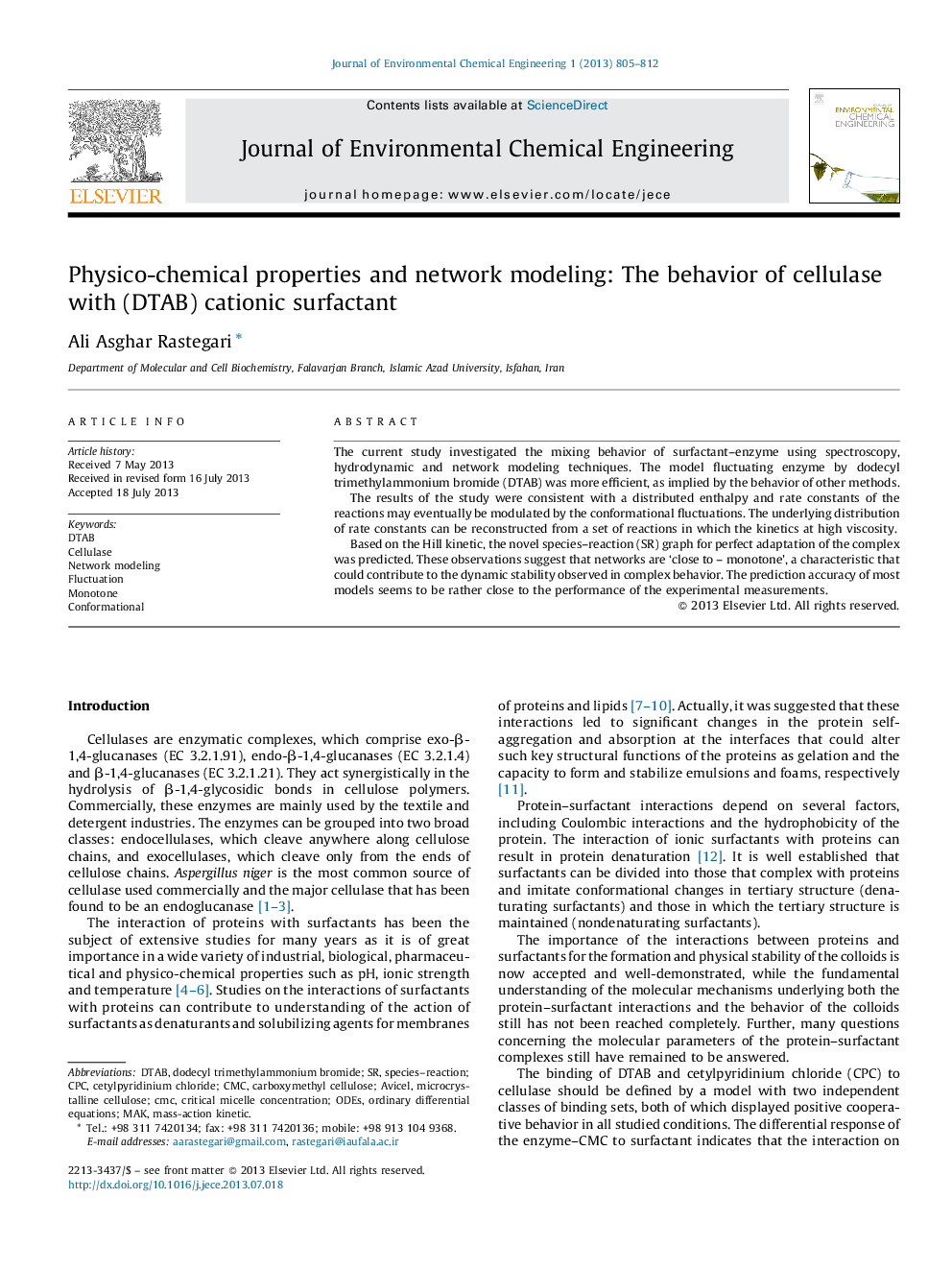| Article ID | Journal | Published Year | Pages | File Type |
|---|---|---|---|---|
| 222469 | Journal of Environmental Chemical Engineering | 2013 | 8 Pages |
The current study investigated the mixing behavior of surfactant–enzyme using spectroscopy, hydrodynamic and network modeling techniques. The model fluctuating enzyme by dodecyl trimethylammonium bromide (DTAB) was more efficient, as implied by the behavior of other methods.The results of the study were consistent with a distributed enthalpy and rate constants of the reactions may eventually be modulated by the conformational fluctuations. The underlying distribution of rate constants can be reconstructed from a set of reactions in which the kinetics at high viscosity.Based on the Hill kinetic, the novel species–reaction (SR) graph for perfect adaptation of the complex was predicted. These observations suggest that networks are ‘close to – monotone’, a characteristic that could contribute to the dynamic stability observed in complex behavior. The prediction accuracy of most models seems to be rather close to the performance of the experimental measurements.
